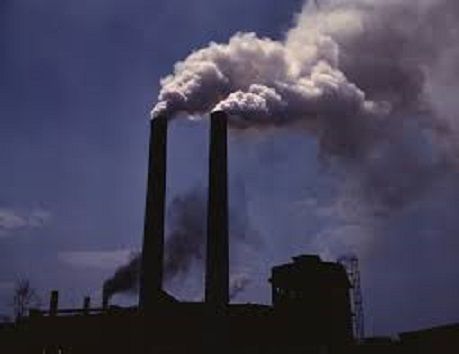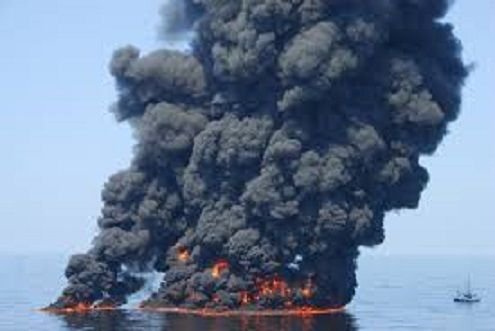Air pollution and its effects

Dear reader, thanks for checking on my blog once again. In my previous posts I have been discussing about various activities we do that endangered us due to our ignorance. Today I will be discussing on the 'effect of air pollution'.
Air pollution can be described as harmful substances such as particulates and biological molecules that are present in the atmospheric air which may cause allergies, diseases and also death of humans; it also causes harm to other living organisms such as plants and animals, and it may causes damages to natural or built environment. Natural and human activity processes can both cause air pollution.
According to Blacksmith Institute World’s Worst Polluted Places report (2008), it was gathered that indoor air pollution and urban air quality were listed as two of the world worst toxic pollution problems. World Health Organization (WHO) (2014) report gathered that around 7 million people died in 2012 worldwide, an estimate roughly echoed by one from the International Energy Agency.
Generally air pollution can be defined as a substance in the air that can have adverse effects on human and the ecosystem. This substance can be solid particles, gases or liquid droplets. A pollutant can be man-made or natural. And this can be classified under primary or secondary pollutant.
The pollutants that are majorly produced from a volcanic eruption are referred to as primary pollutant. Other examples are carbon monoxide from exhaust of a vehicle, or sulfur dioxide that are released from factories. While secondary pollutants are formed in the air when primary pollutants react or interact. Ozone layer is a prominent example of secondary pollutant. Some pollutants may be both primary and secondary: formed from other primary pollutants and they are both emitted directly.
Examples of substances emitted into the atmosphere by human activity include:
Carbon dioxide (CO2): this gas has been tagged as the leading pollutant and the worst climate pollution due to its role as a greenhouse gas. Carbon dioxide is a by-product given off by the human respiratory system which is also essential for plant growth. Nevertheless, CO2 currently forms about 405 parts per million (ppm) of earth’s atmosphere, compare to about 280 ppm in pre-industrial times. About billions of metric tons of carbon dioxide (CO2) are emitted annually by burning of fossil fuels. The increase of carbon dioxide (CO2) in the atmosphere has been in geometric rate.
Sulfur oxides (SOX): Sulfur dioxide (SO2) falls under the category of this type of oxide. It is produced by volcanic eruption in various industrial processes. The component of sulfur compound can be traced to coal and petroleum which when undergone combustion reaction generates sulfur dioxide.
Acidic rain is usually formed when carbon dioxide (CO2) oxidized further in the presence of nitrogen dioxide (NO2) as a catalyst. This has resulted into concern over the environmental impact of the use of these fuels as power source.

Nitrogen oxides (NOx): Oxides of nitrogen, especially nitrogen dioxide (NO2), are produced during thunderstorms by electric discharged and are expelled from high temperature combustion. NO2 is one of the several oxides of nitrogen and one of the most prominent air toxic pollutants; it has a sharp characteristics, biting odor, and also reddish-brown.
Carbon monoxides (CO): This is one of the several oxides of carbon. The gas is odorless, colorless, toxic and non-irritating. It is a product of combustion of fuel such as wood or coal in a limited supply of air. Exhaust from vehicle is a major contributor of carbon monoxide into our atmosphere. The presence of this gas forms a smog formation type in the air which has been linked to many lung diseases and disruptions to the natural environment and animals. According to a report in 2013, it was gathered that more than half of the carbon monoxide (CO) emitted into our atmosphere was emanated from vehicle traffic and that over 20 pounds of carbon monoxide (CO) in the air were only caused by burning of one gallon of gas.
Volatile Organic Compound (VOC): these types of compounds are also known as outdoor air pollutant. They can either be methane or non-methane in category. Methane is a proactive greenhouse gas which contributes to enhance global warming. Other hydrocarbon VOCs also play an important role in creating ozone layer depletion and prolong the life of methane in the atmosphere. The quality of the local air is the function of its effects. Compounds like toluene, 1, 3-butadiene and xylene are suspected carcinogens and may lead to leukemia if too much exposed to.
Particulates: these are often referred to as atmospheric particulate matter or fine particles. They are tiny particles of liquids or solids suspended in a gas, whereas aerosol refers to the combination of gas and particles. Some of these particulates occur naturally, originating from forest and grassland fires, living vegetation, sea pray, dust storms, volcanoes etc. industrial activities, power plants, burning of fossil fuels in vehicles, and other human activities generate significant amount of aerosols. Anthropogenic aerosols-those made by human activities currently amount to 10% of our atmosphere.
An increase in the level of fine particles in the air is linked to health hazards such as lung cancer, heart disease, and altered lung function. This deepens the condition of those living with asthma as a result of respiratory infections. Persistent free radicals connected to airborne fine particles are linked to cardiopulmonary disease.
Chlorofluorocarbons (CFCs): these are gases that are released from aerosol sprays, refrigerators, air conditioners, etc. these compounds are very harmful to the ozone layer because if found in the stratosphere they will react with other gases and damage the ozone layer. This enhances harmful ultraviolet rays to reach the surface of the earth and it can cause skin cancer, eye disease and also cause damage to plant.
Radioactive pollutants: radioactive pollutants are produced by nuclear explosions, war explosives, nuclear events, and other natural processes.
Secondary pollutants: secondary pollutants are particulates that are created from gaseous primary pollutants and compounds in photochemical smog. It occurs as a result of large amounts of coal burning in an area caused by a mixture of smoke and sulfur dioxide. In modern days, smog does not usually occur as a result of burning coal but majorly from vehicles and industrial emissions that are acted upon in the atmosphere by ultraviolet light from the sun.
Ozone (O3) is the main constituent of the stratosphere, which is formed when NOx and VOCs react together in the atmosphere. It is also an important constituent of the region called ozone layer in the stratosphere.
Minor air pollutants: the major pollutant that falls under this category is Persistent Organic Pollutants (POPs).
Persistent Organic Pollutants (POPs):
persistent organic pollutants are compounds that are resistant to environmental degradation through biological, chemical, and photolytic processes. Persistent organic pollutants have been observed to persist in the environment, bio-accumulate in human and animal tissue, bio-magnify in food chains, and to have potentially significant impacts on human health and the environment.
Health effects of pollution
Some of the health effects of pollution are; heart disease, respiratory infections, stroke, lung cancer and death.
Cardiovascular disease

In 2007 report, it was shown that exposure to air pollution is a risk factor of having cardiovascular disease and this has resulted into up surging increase in the number of people suffering from heart related diseases which increases the mortality rate.
Lung disease
More asthmatic patient cases were reported according to a research conducted in London in 1952 due to exposure to traffic related air pollution. Air pollution has been associated with increased hospitalization and mortality rate from asthma and Chronic obstructive pulmonary disease (COPD) such as chronic bronchitis and emphysema.

Cancer
Long-term exposure to ultraviolet light from the atmosphere has been established as the number one factor that can cause skin cancer. According to a research it was found out that exposure to particulate matters (PM) was also associated with an increased risk of mortality.

Conclusion
Air pollutions have been traced to have major impacts on human health, triggering, and inducing many diseases leading to high morbidities and mortalities, particularly in the developing countries such as Nigeria. Therefore, air pollutions control is vital and should be on the top of priority list of the governments. The policy makers and legislators in these countries must update all laws and regulations related to air pollutions. Coordination between different departments involving in air pollutions must be leaded by a powerful environmental protection organization. An effective environmental protection organization should have enough budgets for administration, research, development, monitoring, and full control of the environment including air pollution.
Thanks for reading
Please note: all pictures used in this post are labeled for free usage
.
Hi @engrkomoo, always acknowledge quoted article by using the using the quote markdown
>and referencing the quote.You wrote
Persistent Organic Pollutants (POPs): persistent organic pollutants are compounds that are resistant to environmental degradation through biological, chemical, and photolytic processes. Persistent organic pollutants have been observed to persist in the environment, bio-accumulate in human and animal tissue, bio-magnify in food chains, and to have potentially significant impacts on human health and the environment.
and I found
Persistent Organic Pollutants (POPs): persistent organic pollutants are compounds that are resistant to environmental degradation through biological, chemical, and photolytic processes. Persistent organic pollutants have been observed to persist in the environment, bio-accumulate in human and animal tissue, bio-magnify in food chains, and to have potentially significant impacts on human health and the environment.Source.
thanks a lot for drawing my attention to that @greenrun, I've made the necessary correction now. please you can help to review it for curation thanks.
I will appreciate if you can help me to revisit my work for curation